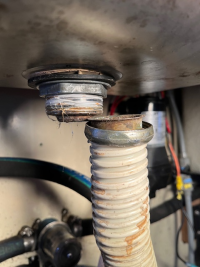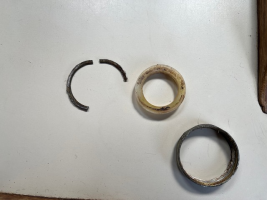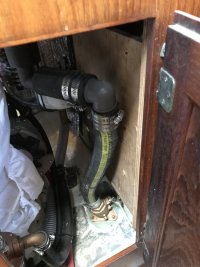I discovered that the galley sink hose on our Ericson 32-3 had separated at the top just below the sink drain connection. I'm starting on the replacement process, which is new to me. I'm assuming its pretty straightforward - close seacock, loosen hose clamps, remove old hose and replace hose. Replace any hose clamps that need it, then reassemble. I would appreciate hearing any tips or pointers. One concern I have is if I'm going to find any thing unexpected with the fittings at the seacock or sink end that affect the process. Do I need to use some kind of sealing compound between hose and fitting at either end or is the clamp pressure sufficient.?
I started to remove the old hose and loosened the hose clamps at the seacock end (closed), at which point some seepage came from the hose so I paused the project. This may be residual water in the sink hose, but I'm worried that if I pull the hose all the way off I'll find there is a problem with the seacock not actually sealing out the saltwater (boat is in the slip). I haven't been able to find much on this site or Youtube about this so far, any leads appreciated.
Thanks for any thoughts on this admittedly fairly elementary project.
I started to remove the old hose and loosened the hose clamps at the seacock end (closed), at which point some seepage came from the hose so I paused the project. This may be residual water in the sink hose, but I'm worried that if I pull the hose all the way off I'll find there is a problem with the seacock not actually sealing out the saltwater (boat is in the slip). I haven't been able to find much on this site or Youtube about this so far, any leads appreciated.
Thanks for any thoughts on this admittedly fairly elementary project.





